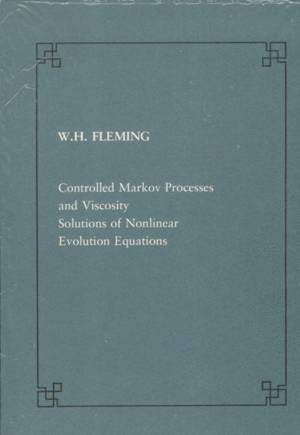
- Afhalen na 1 uur in een winkel met voorraad
- Gratis thuislevering in België vanaf € 30
- Ruim aanbod met 7 miljoen producten
- Afhalen na 1 uur in een winkel met voorraad
- Gratis thuislevering in België vanaf € 30
- Ruim aanbod met 7 miljoen producten
Zoeken
Controlled Markov Processes and Viscosity Solutions of Nonlinear Evolution
Wendell H Fleming
€ 16,95
+ 33 punten
Omschrijving
These notes are based on a series of lectures delivered at the Scuola Normale Superiore in March 1986. They are intended to explore some connections between the theory of control of Markov stochastic processes and certain classes of nonlinear evolution equations. These connections arise by considering the dynamic programming equation associated with a stochastic control problem. Particular attention is given to controlled Markov diffusion processes on finite dimensional Euclidean space. In that case, the dynamic programming equation is a nonlinear partial differential equation of second order elliptic or parabolic type. For deterministic control the dynamic programming equation reduces to first order. From the viewpoint of nonlinear evolution equations, the interest is in whether one can find some stochastic control problem for which the given evolution equation is the dynamic programming equation. Classical solutions to first order or degenerate second order elliptic/parabolic equations with given boundary Cauchy data do not usually exist. One must instead consider generalized solutions. Viscosity solutions methods have substantially extended the theory.
Specificaties
Betrokkenen
- Auteur(s):
- Uitgeverij:
Inhoud
- Aantal bladzijden:
- 68
- Taal:
- Engels
- Reeks:
Eigenschappen
- Productcode (EAN):
- 9788876422508
- Verschijningsdatum:
- 1/10/1988
- Uitvoering:
- Paperback
- Formaat:
- Trade paperback (VS)
- Afmetingen:
- 172 mm x 241 mm
- Gewicht:
- 181 g

Alleen bij Standaard Boekhandel
+ 33 punten op je klantenkaart van Standaard Boekhandel
Beoordelingen
We publiceren alleen reviews die voldoen aan de voorwaarden voor reviews. Bekijk onze voorwaarden voor reviews.











